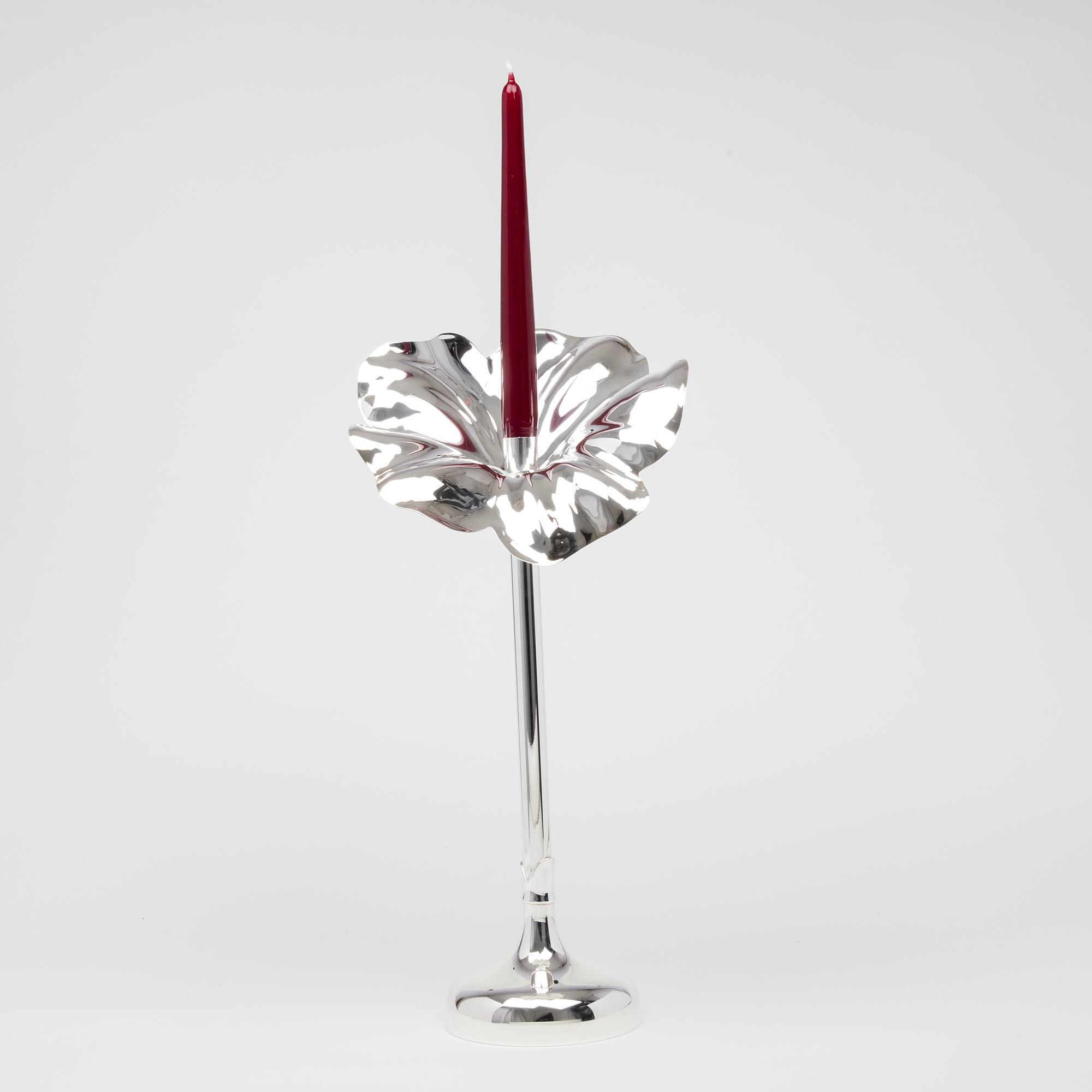- Home
- Search By Silversmith
- Gerald Benney
Gerald Benney

ADRIAN GERALD SALLIS BENNEY CBE RDI (1930 - 2008)
Gerald Benney was an outstanding and influential British goldsmith during the 20th century in a career spanning more than 50 years and where he was the first British craftsman to hold four royal warrants simultaneously. As well as designs in silver, in his early years Benney also used other materials to design a range of products including clocks, lamps and prams. His work can be seen in many collections worldwide, including those of the Victoria and Albert Museum and Goldsmiths' Company.
Born in Hull, Yorkshire in 1930. His mother, Aileen, was a talented silversmith and his father, Ernest, was Principal of Brighton College of Art. Young Gerald attended Brighton College of Art from 1946-1948, where he studied design and craft under the tutelage of Dunstan Pruden. After two years national service with the Royal Army Service Corps he went to the Royal College of Art to study under Professor Robert Goodden. He excelled, and in 1952 a four-piece tea service and tray secured him the Prince of Wales Scholarship.
It was at the RCA that Benney met fellow designers and silversmiths David Mellor and Robert Welch and between them they were to revolutionise post-war silver design. During his last term at the RCA, Benney founded his first workshop at Suffolk House, Whitfield Place off Tottenham Court Road in London.
Early in his career Benney discovered, by accident, the distinctive surface texturing of silver that was to become his signature. He inadvertently used a hammer
ADRIAN GERALD SALLIS BENNEY CBE RDI (1930 - 2008)
Gerald Benney was an outstanding and influential British goldsmith during the 20th century in a career spanning more than 50 years and where he was the first British craftsman to hold four royal warrants simultaneously. As well as designs in silver, in his early years Benney also used other materials to design a range of products including clocks, lamps and prams. His work can be seen in many collections worldwide, including those of the Victoria and Albert Museum and Goldsmiths' Company.
Born in Hull, Yorkshire in 1930. His mother, Aileen, was a talented silversmith and his father, Ernest, was Principal of Brighton College of Art. Young Gerald attended Brighton College of Art from 1946-1948, where he studied design and craft under the tutelage of Dunstan Pruden. After two years national service with the Royal Army Service Corps he went to the Royal College of Art to study under Professor Robert Goodden. He excelled, and in 1952 a four-piece tea service and tray secured him the Prince of Wales Scholarship.
It was at the RCA that Benney met fellow designers and silversmiths David Mellor and Robert Welch and between them they were to revolutionise post-war silver design. During his last term at the RCA, Benney founded his first workshop at Suffolk House, Whitfield Place off Tottenham Court Road in London.
Early in his career Benney discovered, by accident, the distinctive surface texturing of silver that was to become his signature. He inadvertently used a hammer
with a damaged head while producing a cup and liked the effect. This surface texturing soon became known as "Benney Bark Finish". The finish was widely imitated and dominated contemporary silver design for almost two decades. Its success was, not only, for its new contemporary look but, also for the practical reasons that it almost eliminated tarnish and fingerprints.
In 1963, Benney moved to Reading and it was here that he decided to develop the use of enamel to further embellish his silver objects and designs. He realised that he would need to learn the skills from established artisans. His first steps in 1968 were to travel to Zurich to find an enameler who worked for the house of Burch Korrodi. By chance, he came across the Norwegian Berger Bergensen who, not only continued to practise the art of enamelling for Burch, but had also worked for Karl Fabergé's great rival Bolin. Bergensen was persuaded to come to Britain and instruct the Benney workforce all he knew about enamelling: Alan Evans and Robert Winter became the most notable master enamelers for Benney.
Though it took several years to master the craft, the Benney studio refined and mastered the art of enamelling to the extent that they were able to decorate larger surface areas than Fabergé. There is little doubt that they went on to be one of the world's foremost modern enamellers.
In 1969, Benney moved his London studio to Falcon Wharf, Bankside where he eventually employed 22 people. Four years later, he moved his workshop to warehouses in Southwark and in the same year The Goldsmith's Hall held a major retrospective of his work.
In 1974 Benney received his first royal warrant from Her Majesty The Queen, followed a year later by those of The Queen Mother and His Royal Highness The Duke of Edinburgh. In 1980 Benney received an unprecedented fourth royal warrant from His Royal Highness The Prince of Wales.
Besides running his own silver studio, Benney held several other design posts and between 1957 and 1969 he worked as a consultant designer for Viners. He worked on domestic pieces for production in silver, pewter and stainless steel. Particularly successful were his designs for flatware and cutlery in stainless steel. In 1971 he was awarded Royal Designer for Industry and from 1974 to 1983 he was Professor of Silversmithing & Jewellery at his alma mater, the Royal College of Art.
In 1993, together with his son Simon, Benny opened a shop at 73 Walton Street, Knightsbridge, London and two years later was awarded a CBE.
1 ITEM
Please create wishlist to add this item to

